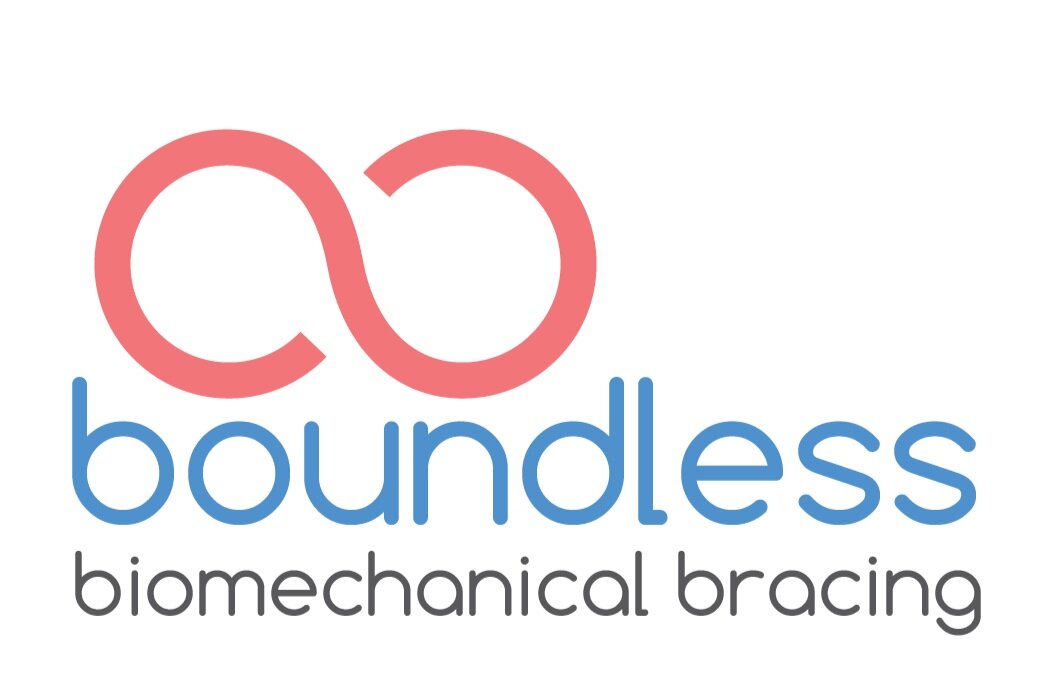Plantar fasciitis is one of the most common foot conditions and occurs with both sedentary and athletic individuals1. This resource was developed to provide a brief overview of treatment options for plantar fasciitis. These tools may be accessed through the guidance of your Certified Orthotists and Registered Physiotherapist.
This article was developed in collaboration with Propel Physiotherapy and is available to patients as a handout at Boundless Biomechanical Bracing.
Footwear Assessment
Every treatment plan should involve an evaluation of footwear. Poor footwear choices can lead to the development of plantar fasciitis, or limit your potential to heal.
Important shoe features include a stiff heel counter, wide midsole and low heel height. Running and walking shoes are a good place to start looking. Avoid wearing shoes with high heels and if you can bend the shoe in half, it does not have the stability you need.
Strengthening and Stretching
Your foot and ankle have muscles that help to support your arch and the biomechanics of proper walking. By creating optimal strength and length in muscles like your calves, toes, arches of your feet, and even your knees and hips your walking efficiency can improve. This can decrease some of the pain associated with plantar fasciitis.
Some stretches can be static, such as holding a stretch for a prolonged period of time, to improve muscular length. Some therapeutic exercises may also target tougher areas of the body by using rollers or firm objects to break down any “muscular knots” or adhesions (e.g., rolling a golf ball under your foot).
Custom Foot Orthotics
The biomechanics associated with certain foot characteristics can put you at risk of developing plantar fasciitis. While plantar fasciitis is often related to a flat or pronated foot position, this is not the only foot alignment that can predispose someone to developing plantar fasciitis.
Everyone’s foot alignment is different, and can change over time. Custom foot orthotics aim to improve the alignment and motion of the foot structures while standing and walking, and reduce strain on the plantar
Shockwave Therapy
A non-invasive therapeutic device that uses energy to reach the target area via a small applicator at the head of the handle. This energy penetrates the skin, sending a radial wave as deep as 7 centimetres into the body. Shockwave works by improving blood flow, decreasing pain perception, improving natural healing through collagen reorganization, and promoting tissue regeneration.
Activity Modification
Plantar fasciitis can continue to irritate your foot/feet if activities are not changed. Your health professional may advise against certain activities that promote irritation to your plantar fascia or connective tissue at the bottom of your foot. Some modifications may be limiting certain sports/activities or decreasing the amount that you walk during the day. In addition, some activity modifications may also include routine exercises and movements that help to keep irritation to a minimum giving your body time to heal.
Where to start?
The first place to start is a thorough assessment by a trusted health professional. Orthotists and Physiotherapists are good resources. They can recognize what is contributing to your plantar fasciitis and establish a clear plan of action. It may be tight muscles, poor footwear, or improper foot biomechanics. Often multiple approaches will be required. If conservative management does not alleviate your plantar fasciitis consult your physician to discuss additional treatment options.
Please consult your extended health carrier (i.e., insurance company) to determine what products and services are covered by your plan.
1 Schwartz, E., Su, J. (2014). Plantar Fasciitis: A Concise Review. The Permanete Journal, 18(1), 105-107.









